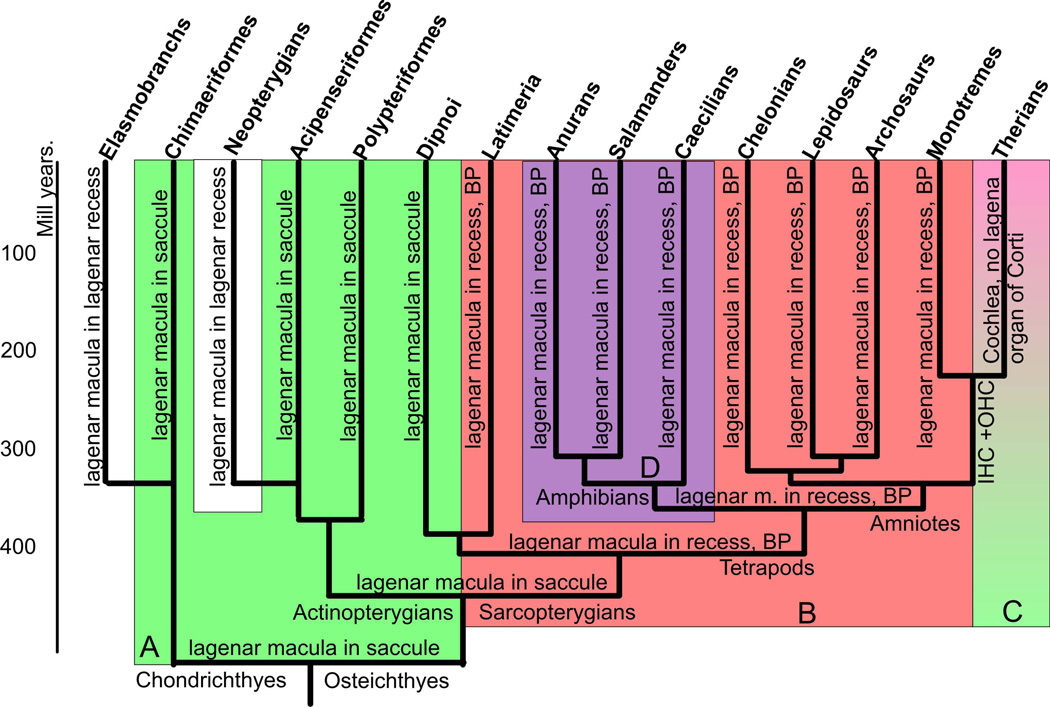Figure 1.
This figure displays a consensus diagram of multiple cladistic analyses pointing out the likely relationship between different sarcopterygian and actinopterygian taxa and in different shades the major morphological changes. Note that lungfish resemble basal actinopterygians and Chondrichthyes, in particular ratfish, in great detail in that the lagenar macula is together with the saccular macula in the saccular recess (highlighted in light green, A). The derived conditions of tetrapods, apparently shared with the coelacanth Latimeria, is the possession of a lagenar recess with the lagenar macula at the tip, the formation of a basilar papilla and a perilymphatic sac to a round window in the posterior wall of the otocyst (highlighted in light red, B). Some derived Chondrichthyes and actinopterygians also have a lagenar recess with a lagenar macula in it (shown in white). All amphibians have a shared derived character, the amphibian papilla in its own recess (highlighted in light lilac, D). Salamanders and frogs have lost the neglected papilla and some salamanders and caecilians have lost the basilar papilla which may be in its own recess that comes off the lagenar recess. Some caecilians have lost the lagenar macula but retain the lagenar recess devoid of any hair cells or innervation. Ancestral mammals evolved a basilar papilla with two types of hair cells arranged in multiple rows, inner and outer hair cells (IHC, OHC). Therian mammals either lost or transformed the lagenar macula into the apex of the organ of Corti in a greatly elongated lagenar recess, now referred to as the cochlea or cochlear duct (shown in shades of light green to light red, C). Cladistic relationships compiled from (Shubin et al. 2009; Amemiya et al. 2010; Raincrow et al. 2011; Shan and Gras 2011).

